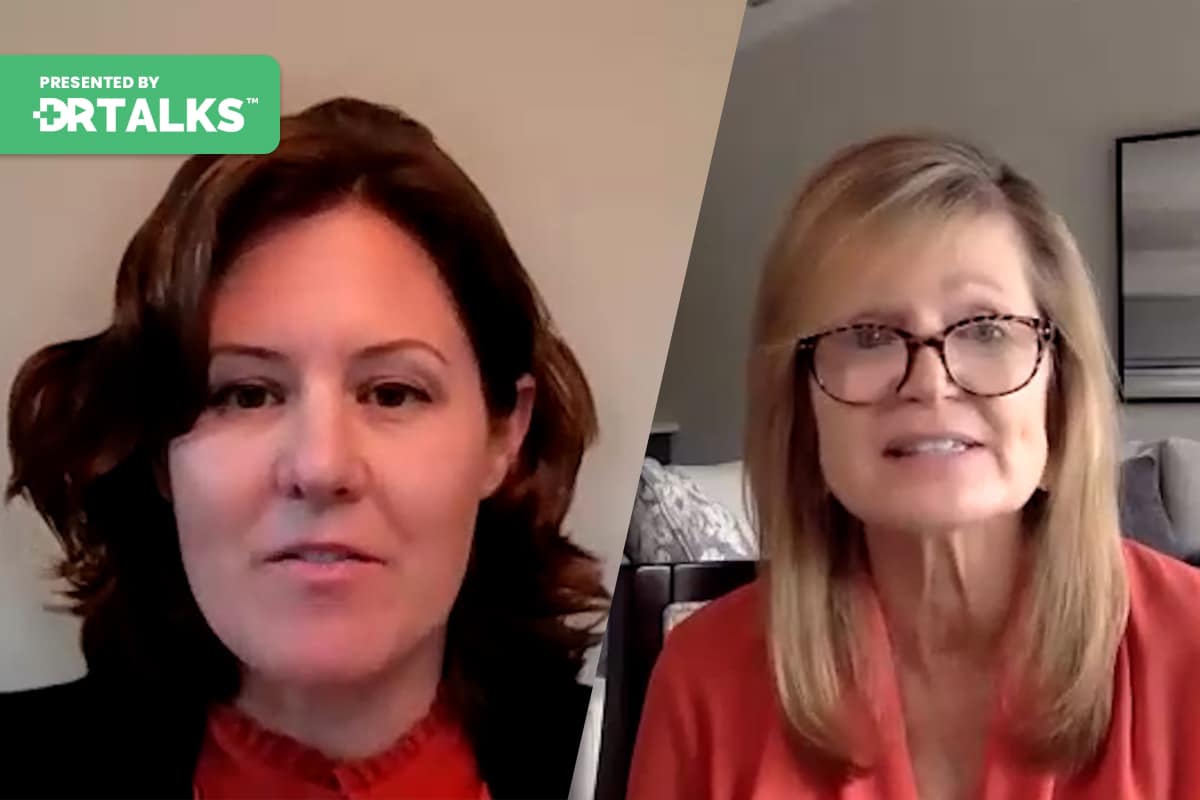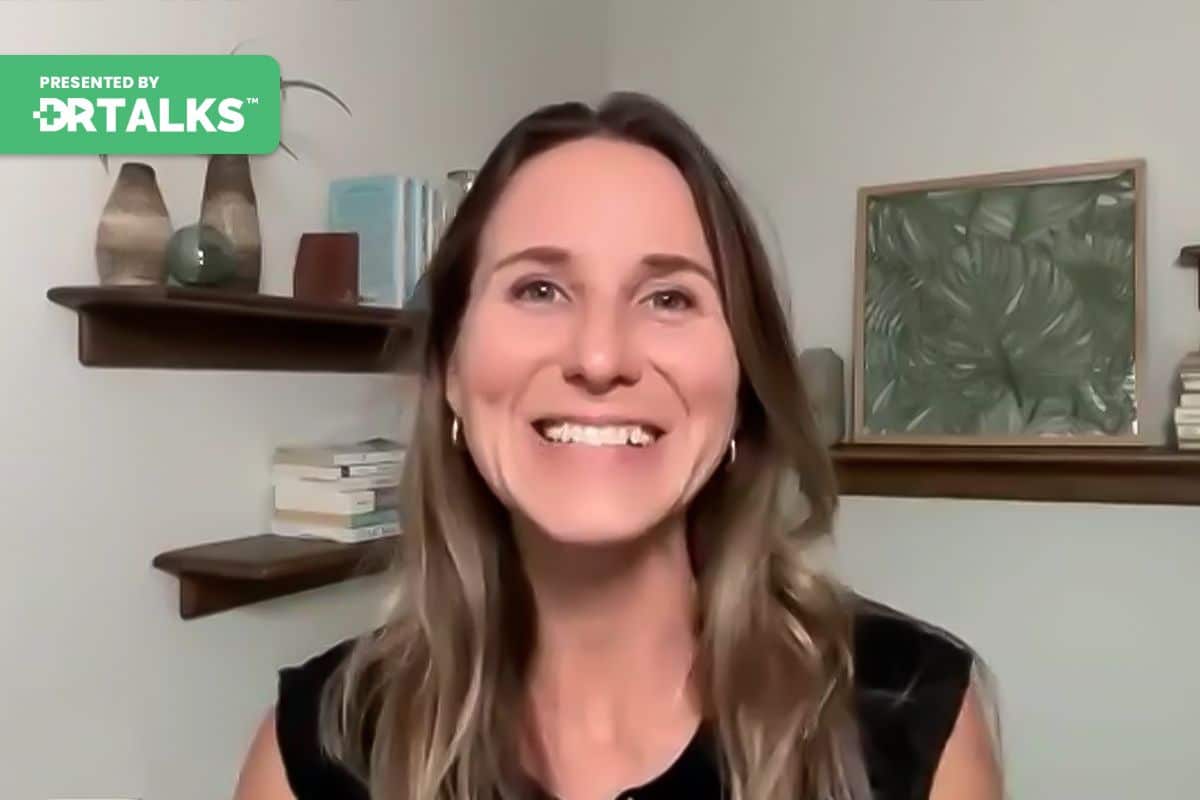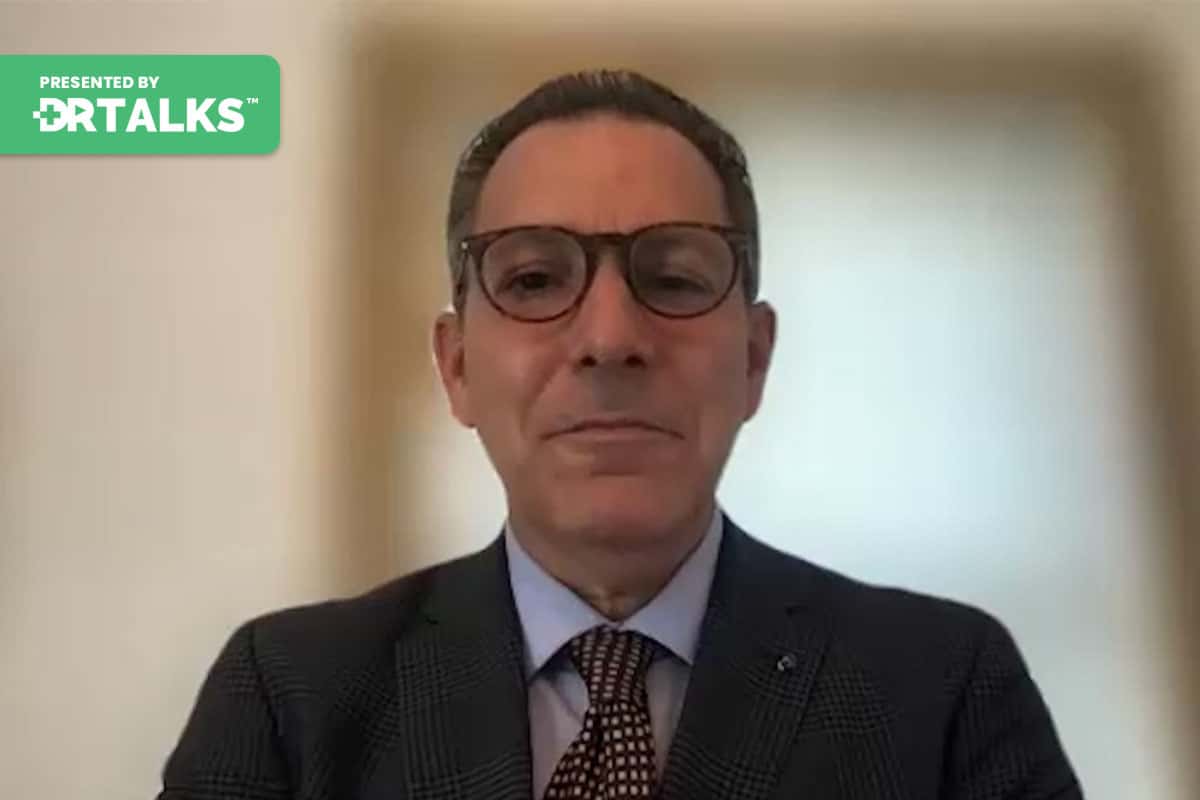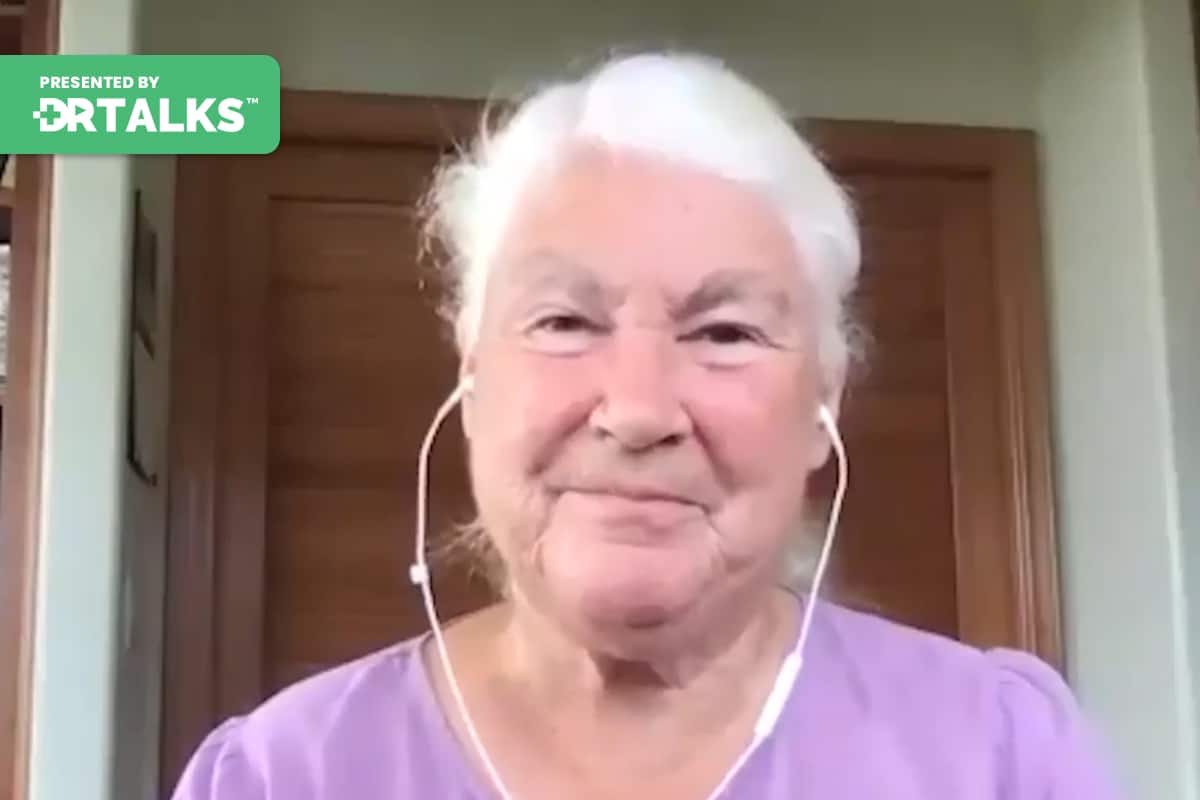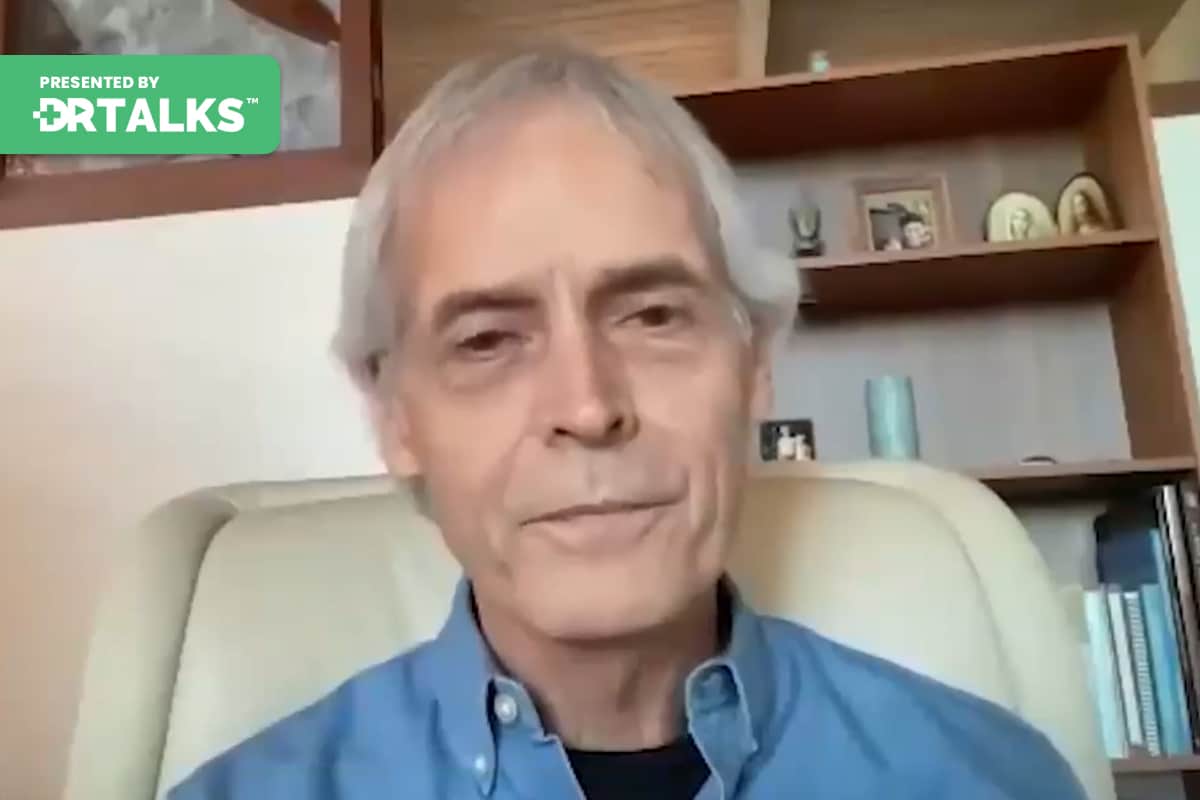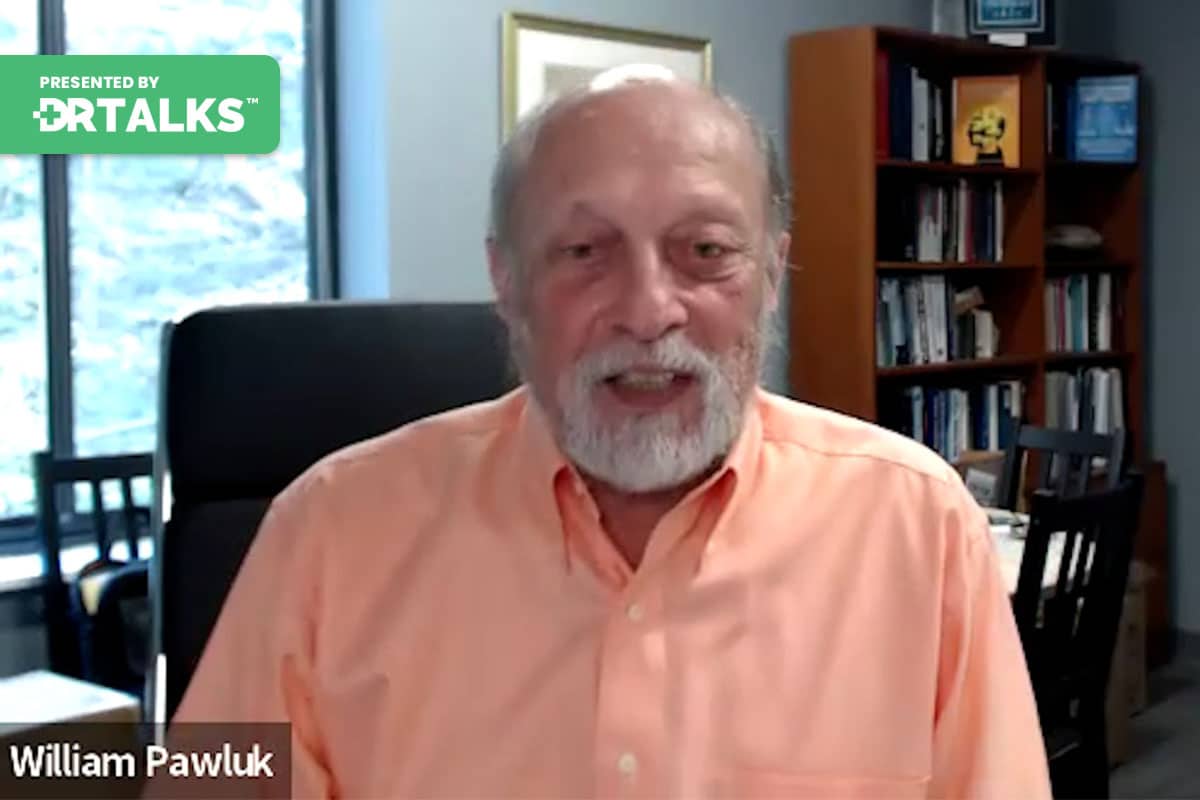Join the discussion below

Dr. Bredesen earned his MD from Duke University Medical Center and served as Chief Resident in Neurology at the University of California, San Francisco (UCSF) before joining Nobel laureate Stanley Prusiner’s laboratory at UCSF as an NIH Postdoctoral Fellow. He held faculty positions at UCSF, UCLA and the University of... Read More
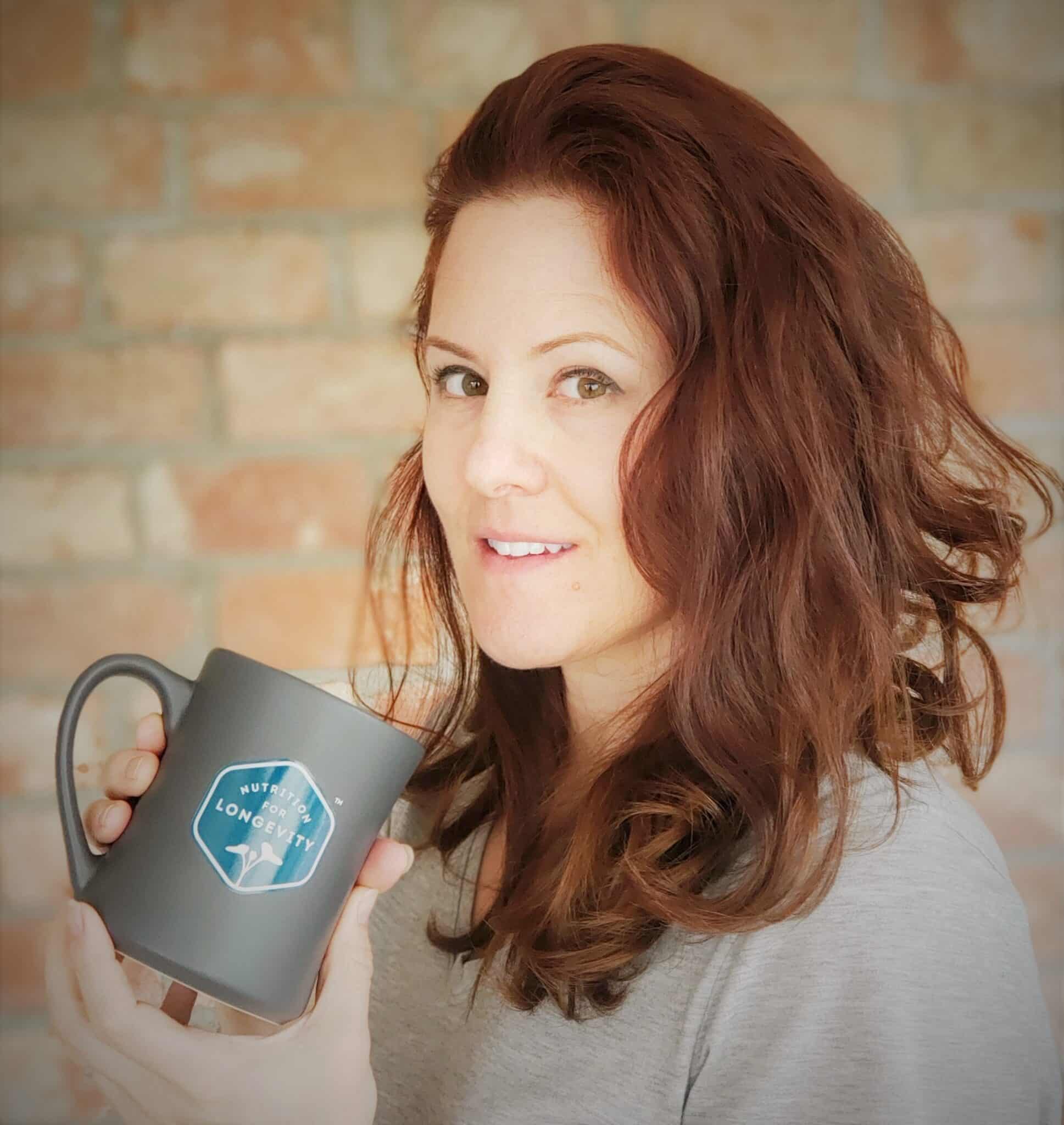
Jennifer is the CEO and co-founder of Nutrition for Longevity, a nutrition company focused on improved health span and disease prevention and management through Food as Medicine. After a successful career and spending 20+ years in the Biotech and Pharmaceutical arena, she decided to shift pace and focus on Food... Read More

Julie is among the many who have recovered their cognitive health using the Bredesen protocol. Sharing the knowledge she gained from reversing her cognitive decline, she’s collaborated with Dr. Bredesen and his integrative physician wife, Dr. Aida Lasheen Bredesen, to write the handbook portion of the New York Times bestseller... Read More
Jennifer Maynard and Julie Gregory discuss how to utilize your nutrition to optimize your health and cognitive abilities.
- Learn about Nutrition for Longevity
- Discover how toxins are incorporated into our daily food supply
- Explore optimal ketosis and what diets are most effective
- Explore how you can personalize your diet to optimize your life
Dale Bredesen, MD
Hi, everyone, and welcome back to the Reverse Alzheimer’s Summit. It is a real honor today to have Jennifer Maynard here. She is the president and CEO of Nutrition for Longevity. Jennifer, welcome. And then also Julie Gregory, always great to talk with you, Julie. And Julie is the founder of AP Form Info and a citizen scientist who’s done so much, as well as an author who has done so much to further the best outcomes in Alzheimer’s, which is what we are all interested in. How do we get the best outcomes, both for the prevention of cognitive decline and for the reversal of cognitive decline? And of course, just a few years ago, if you’d said reverse Alzheimer’s Summit, people would have said, well, wait a minute, what are you talking about? But many still do. They simply don’t believe that it is possible to reverse cognitive decline. We’ve been doing it now for about a decade and have people actually who have been doing it themselves for a decade, including Julie, who’s done such a spectacular job.
So I just want to give a little bit of background before we talk to Jennifer and Julie. Many people have come to me and said, you know, you are telling me that these basic seven things diet, exercise, sleep, stress, brain training, supplementation and detox, the kind of the basic seven things that we that we all want to do to prevent and reverse cognitive decline include a relative or a scripted nutritional approach. You know, you have to do several things to get the appropriate synaptic biochemistry. You have to achieve ketosis because you need this metabolic flexibility of going back and forth between glucose burning and ketone burning. You have to have a high phytonutrients or a plant rich diet, and yet it has to be mildly ketogenic. You have to have organic food. You want to stay away from the toxins. Toxins are one of the most common contributors to cognitive decline. We see it every day.
You have to have a diet that is delicious, that is wonderful to eat and enjoyed by people. You have to feed your microbiome. You have to have something that is varied in multiple colors. You have to have something that has appropriate fiber. And fiber is helpful in so many ways. It is helpful for detox, is helpful for your microbiome, it is helpful for your glycemic load and on and on and on. So you really have to go through a number of things. And I think Julie has done a tremendous job in, in, in the book, The End of Alzheimer’s program and talking about all these things. And so and yet what we found was that nutrition for longevity headed by Jennifer has been able to do this beautifully. So, Jennifer, could you give us a little bit of background? When was nutrition for a longevity formed? Where is it located and how have you managed to do such a great job with these various diets?
Jennifer Maynard
So I co-founded Nutrition for Longevity. I spent 20 plus years in the pharmaceutical biotech arena. So the other side of medicine, I love that behind because I felt like we weren’t doing enough as an industry with food, as medicine. So I partnered with a neutral. Dr. Longo really wanted to have a foundation behind everything that we did and did them as nutrition, not just as this nice to have thing for prevention, but also for true interventions. So we launched Nutrition for Longevity in 2019, and we really focused on being a leader in tailored nutrition and basically what we call lean nutrition. So we don’t add a lot of this or we had no synthetic flavoring preservatives, additives, fillers, and we see a big difference depending on what area we are supporting. Somebody with cancer, for example, might be in intensive chemotherapy and they could have insulin spikes from just cornstarch and pectin reactions.
And we wanted to make sure when people get our food, they are not getting all those other things. So something that people can really trust. And we started also with just a passion around even how food is grown. So we do a lot of collaborations with farmers. It is all about how the soil is even grown or how healthy the soil is. So the soil microbiome is very similar and we say that the rhizosphere microbiome is very similar to our gut microbiome. It is where the, you know, everything with neurotransmitters and everything with the and happens in that part of the plant. And when that’s healthy, you have more phytonutrients. The plant is thriving. It has a really good defense mechanism when it is got a lot of damage in the soil because of pesticides and toxins to the plant, we actually see that it is a less healthy plant, has less of a defense mechanism and creates also less nutrients.
So we wanted to focus not only on that color pop and having that diversity, but even the source of that. Where is that food being grown? How is it being grown? And it is libration to boost regenerative farming and sustainable farming, where we are not promoting synthetic chemicals and we are not bringing those into the plants or the people that are consuming them. Yeah. And one of our most important things, again, is the precision component, making sure that every macro and even for some diets, every micronutrient is measured in every single dish. So our dietitians oversee that very carefully with our development team. And that’s important because we truly want it to be tailored nutrition for exact, again, interventions, not just prevention foods. That’s important to us.
Dale Bredesen, MD
Absolutely. And, you know, it is interesting to me, after all these years, the NIH is agreeing with you now. So the NIH is now coming out and saying we want to put more into food as medicine. And I think that people are realizing that. And, of course, Dr. Lustig, Rob Lustig has done such a beautiful job at showing that much of the food that people consume as part of the standard of American diet really cannot be labeled food. It should be labeled poison because it really doesn’t have a nutritive value. And I think he’s done a great job with proving that. So, Julie, let me come over to you for a moment. You did a fantastic job in the end of Alzheimer’s program talking about, you know, here’s the sort of diet that I use and here’s a sort of died. I being you, here’s a sort of diet that you use and here’s the sort of diet that people can use to do the best to give themselves the best outcomes with cognitive decline. So maybe if you could go into some detail about what are all the different things, because what people keep telling me is, look, just show me how to do this, because it is not that easy to begin with. Just send me something that shows it. And Jennifer has finally come up with that, which is fantastic. Obviously working with you, Julie, and working with Dr. LESHIN. So we all appreciate that. So Julie, if you could talk about what’s actually required for best outcomes for cognitive decline?
Julie Gregory
Yeah, I’m glad you mentioned that we have such a toxic food supply that it is just that easy and it had symptoms of cognitive decline. I’m sure the diet I was eating contributed to that. Using food as medicine was one of my most important interventions. So for us it starts with the non-starchy vegetables from every color of the rainbow, of course, and GMO chemical free. We want them grown in that nutrient dense soil because they are more nutrient dense. We want them to be every color of the rainbow. So I try to get 6 to 9 cups a day. I eat half raw and I eat half cooked meal. It is also very important to get an adequate amount of clean protein. And so we like to lean into the wild caught low mercury seafood. For DHEA, it is vital for brain health and pastured eggs for culling, because it is also so important for the brain. And so the protein favorite animal proteins. But we also use pastured chicken and grass fed beef and we want to make sure everyone gets an adequate amount of protein.
And then the secret ingredient is even though I’m eating 6 to 9 cups of non-starchy vegetables, I am still able to get into ptosis every day by using the high polyphenol olive oil. We’ve recently had studies showing that olive oil, a low and improves cognition and improves the brain structure and function. And I think you have even mentioned, Dale, that it improves stagnation better than a lot of the pharmaceuticals, the mainstream medicine is so excited about. And when you get the right balance of macronutrients using lots of this healthy, high quality, extra virgin olive oil, you can very easily get into mild nutritional ketosis. And we also combine the diet with the long, daily, fast and daily exercise and those three components together make getting into ketosis very easy and very healthy, healthy for your brain and healthy to get high. But you are so right, it is not easy to do. And that’s why I’m so excited that we partnered with Jennifer because these guys have chemical free non GMO proteins. That’s one nutrient dense soil. They’ve got all the clean proteins and that olive oil that you guys are offering is exceptional. I think your polyphenol count is almost 700. Isn’t that right? Yeah, it is fabulous. Yeah.
Dale Bredesen, MD
Yeah. This is very helpful. Thank you so, you know, it is interesting, one of the things that came out of our research over the last 30 years is that Alzheimer’s disease, ultimately what we call Alzheimer’s, is really a chronic innate encephalitis. And it has to do with two major groups of things, immune activation divided by energetics. And so they what we the goal that we have is to decrease that immune activation, find what’s causing it, and rid the body of that, whether it is going to be because of saturated fats, whether it is because of pathogens like P Gingivalis or H.H. V six or things like that. But then also to bring up the energetics and it is interesting, we burn two different things in our brain. Of course, we burn glucose, we burn ketones. And what happens to many of us as we get over 40 is we lose both of those abilities. We are no longer able to burn glucose because we have insulin resistance. So the insulin is not doing the job it was meant to do. But because of the chronically high insulin that is associated with insulin resistance, that actually prevents you from making the ketones that you’d like to burn.
So now you really have an energetic emergency. And when I see patients with cognitive decline, that’s the first thing that comes up. What is the problem with energy to your brain? And in fact, if you look at PET scans, that is the signature for Alzheimer’s disease, temporal and parietal reduction of glucose utilization. So we want to be able to restore both of those. And that’s exactly what this diet does. It restores your ability to be insulin sensitive. Now, I should mention my wife and I went out, we happened to go out for brunch yesterday, which we don’t do often because of the since the pandemic started, we’ve been doing a lot more eating of great food at home. But we happened to go out yesterday, so Aida wanted some wild caught salmon. Well, guess what? You can’t get it at most restaurants.
So she asked. Well, you know, how’s the salmon? No, not wild clippers. No, the vegetables aren’t organic. So the very things that we are looking for are not available at most restaurants. So again, coming back to Jennifer, the idea that you can now deliver these, have them fresh. And I have to say I’ve eaten some of these and actually to two different weeks full and they were fantastic. I was so pleasantly surprised because I expected something to show up at my my door to be kind of prepackaged and not very good. And so congratulations to nutrition for longevity and to Julie for such a fantastic job. So Jennifer, maybe if you could talk a little bit about where you source some of your things and a little bit about what are some of the offerings. So for people who say, okay, I’m going to start the protocol by getting into nutritional ketosis, by using a plant rich, mildly ketogenic diet, what sorts of things was that going to be a problem? Am I going to eat things that aren’t delicious? What sorts of things can I expect to enjoy?
Jennifer Maynard
Yeah, so fish is a big thing for us. Our sourcing of our fish is really important. A lot of people don’t know this, but I was born and raised in Alaska in a fishing village, so I’m a little bit of a fish snob, I joke. But wild caught Alaskan salmon is one of our top things that we try to secure at different times of the year. And we know that that’s rich in healthy oils. And it is not got a lot of the toxins of some of the different types of fish that we see out in the ocean and also families. So we really try to get sustainable, wild caught. We follow the Monterey Bay Aquarium kind of they put an infrastructure around that to just make sure that fish is not overfished, that it is not high and heavy metals and things like that. So that’s our number one thing is where we source our proteins that we are very careful. We have this belief of boost your daily ritual, don’t diminish it, because a lot of the things we put in our body is diminishing our health instead of boosting it. And that’s really the premise behind what we have. Same with our eggs. So we use sustainable free range eggs and that’s really important that I eat mainly plant based, but I do eat eggs. I have my own chickens myself, but a lot of people don’t have the luxury to raise their own chickens. And that’s something I really believe is important, is making sure that those eggs, if you have ever bought just normal grocery store eggs versus free range eggs, and you look at the color of the yolk, you can see the nutrient, the difference between them. So our eggs that we procure from from sustainable farmers are almost orange. They are this deep, deep orange versus this pale yellow. And that color does matter. And for plants, we really focus on those high nutrient rich plants that are diverse in color. So a lot of leafy green and a lot of purple vegetables. So a lot of the longevity regions of the world, they have a lot of purple in their diet.
In the US it is one of the lowest utilized colors in the diet. So we just try to bring in a lot of diversity of those low starchy vegetables. And Julie worked very closely with our team developing this exact program to make sure that it did everything to the tee so that people can then follow this protocol, which may be hard to do on your own, especially if you are taking care of somebody that’s already in cognitive decline. We know anyone that’s done that knows it is a very challenging thing to do as is. So this just takes some of that burden off and makes it easier for people. And people can do weekly, they can do biweekly if they just need kind of help staying on track with it. There’s a lot of flexibility that we try to offer people, so it is just again, making it simple. I lived in Europe for six years and it was amazing to me how easy it is to eat healthy in Germany and Switzerland.
The two places I lived and when I moved back to the U.S., food tasted so different and it was so hard to eat, clean and continue to have low sugar, low processed foods because like you said, just going out to even a somewhat healthy restaurant, you know, you are trying to figure out what kind of oils are they using, what kind of sugars are they putting in there, even their salad dressing. So we just, again, try to make it easy for people when they are eating at home to follow something and not have to overthink it and stress about it. Because you obviously don’t want create stress trying to follow something that’s making you healthier.
Dale Bredesen, MD
Absolutely. And again, you know, it is a great way to get started because it helps you to get into keep into ketosis. It helps you to do the right things. And there are a couple of points, I think, that are relevant to what you were just talking about. And one of them, you know, caregivers. So you mentioned keeping it simple. So the caregivers are and I just had an email literally over the weekend from a caregiver who’s saying, well, wait a minute, you know, do I have an increased risk for various diseases, including cognitive decline? And unfortunately, the answer is yes. And there are lots of studies on caregivers. They are unfortunately under increased stress. Therefore, they have shortened telomeres, they have increase in stress related diseases, things like ulceration, things like hypertension and even unfortunately, cognitive decline. So making things simple is a really a good idea. And the other thing I think is very important to point out, people will say, well, wait a minute, you are talking about eggs. And those aren’t good for my blood vessels. Well, you are talking about omega three eggs so high in Omega three. These are actually good for your blood vessels. Not bad for your blood vessels because it is critical what your omega three to omega six ratio is. And your arachidonic acid to EPA ratio. So these things are critical to look at whether you are in a status of laying down plaque in your arteries or actually you are going to be able to pick up plaque. And again, so many people with cognitive decline, what they are showing is they have these high omega six to omega three ratios. So it is a pro-inflammatory state and they may be up at 15 or more. That 15 is kind of the average for the American diet. We’d like to see you more at four or three or two in that range. And then as Julius pointed out before, we’d like to see your Omega Index up around 10%.
You really want to have, you know, a fair amount of omega threes in your membranes, absolutely critical and relatively low arachidonic acid. Again, a pro-inflammatory side. One of the interesting things that’s come out of the biochemistry and this is pointed out by Dr. Alexei Kraken, who’s an Interactome expert, and he pointed out that when you look at patients with Alzheimer’s disease, what you see, it is not just that they have inflammation. They have a specific part of their innate immune system activated, and it is the part associated with memory. So when you make that amyloid, that amyloid is a long acting molecule, it is essentially going to live in these lakes ready to come out. It is just like putting soldiers in a Ford. They are sitting there. They are not doing terrible things in that little lake. But if you get inflamed, if you get exposed to various toxins or various pathogens or you eat saturated fats or you have a leaky gut or you have sinusitis or poor dentition, any of these things outcome the soldiers from the Ford and they are now they are actually to destroy microbes.
But unfortunately they are also telling you you have got to pare back your synapses. You’ve got to now live with a smaller brain. So we want to avoid that inflammation. This is an anti-inflammatory diet. This is a pro detoxification diet. This is a pro energetic diet. So all of these things are absolutely crucial. And coming back to you, Julie, I know you have dealt with over 3000 people who are on it, but we forgot info. We’ve got so many people around the world and I get this question all the time. I found out I’m APOE4 positive whether it is single or double copy and you know, am I going to get Alzheimer’s and what should I do about it? And I always say the same thing. It is not fate. There is a tremendous amount you can do about it. And so if you could talk a little bit about what are the people that you deal with on April 14th? So what are they doing about their nutrition?
Julie Gregory
Well, first, I want to start by sharing. I’m an E4 homozygous, so I have two copies of this high risk label that puts me up highest risk for the common form of Alzheimer’s disease. And in our community, you know, I have not checked lately, but I think we are closer six or 7000 people now. And Lauren, our Facebook group. Right. People are using a variety of different approaches. The one thing that I think almost everybody agrees on is wholegrains are very well suited for a protein for carriers. Many people are getting into mild ketosis using the high polyphenol extra virgin olive oil, but we’ve got segments of our group doing a whole bunch of different things. We are not a monolithic organization. I’d say the vast majority are practicing a diet very similar to Keto Flex 12 three and having great results with that too.
Dale Bredesen, MD
Fantastic. Okay. And Jennifer, coming back to you. You know, you mentioned Valter Longo is just one of my favorite people. Valter was a graduate student at UCLA when I was a young assistant professor. And actually, we published some papers together. So I’ve always admired Valter has done such great work over the years. I was actually on the night a council, the National Aging Council, when he came to the NIH years ago to present his idea of a fasting mimicking diet, which he talked about at that time for cancer. But of course is also going to turn out to be very important for longevity, has a wonderful impact, of course, not to stimulate tau. And so it is brilliant stuff. And I have to say, Valter was the only graduate student I ever met who knew exactly what he wanted to do from day one, and he knew what experiments he wanted to do, what he wanted to publish. He’s always been very directed and very successful. So I have great admiration for Valter and the stuff you do.
And I have to say the idea of a Kito Flex 12 three approach which we have developed for synaptic support and synaptic maintenance and best outcomes for Alzheimer’s. Yeah, literally is going to get you help to get you into ketosis. And by the way, I measured my own ketones when I went on your diet and it worked beautifully. So very helpful for synaptic genesis but recently we had a patient who was also a little bit overweight and clearly had some pro-inflammatory adiposity going on, which happens for people. And we recommended, well, what do you think about the fasting mimicking diet? And so she did order that. She did use that and she was thrilled and she lost weight with that and was very happy. So for people who are overweight, it is something to think about. And even going back and forth at times, a couple of times a year as as Baltar has said, or the fasting mimicking diet may be helpful.
And by the way, we see people losing weight. And I used it when I first started this back in 2012. The people who would tell me I’ve lost ten or £20 over the first couple of months were often the ones that I knew were going to do very well because they were becoming insulin sensitive. So with Kilo Flex 12 three, you do tend to lose weight and if you are losing too much weight, then we recommend fine cycle off. One of the things I like that you guys have done is to make it so that is ten meals. So you have lunch and dinner for five days. So that gives you the weekend. You can cycle out of ketosis, you can change.
One of the things that’s come up recently, in fact I just got an email yesterday was what about a carnivorous diet? Well, so there’s a lot of interest in this right now. But my argument was, wait, there’s nothing not a single paper published to show that a carnivorous diet reverses cognitive decline or is part of a program to do so. Now, for some autoimmune people, it is proved to be helpful. Julie, maybe you could talk to us for a minute about what has been reported to you, because I know again, you have got this I didn’t realize was up six or 7000. Congratulations. That’s great. You’ve got this large community now, so you are really able to crowdsource information from lots of people who are doing various things for their cognition. What are what is the feedback you have had from people who’ve gone on these carnivorous diets?
Julie Gregory
You know, we certainly have a small group in our community that are committed to this approach. They are using it primarily if they have GI issues, autoimmune issues and insulin resistance. And some people are reporting excellent results. We’ve had others report that they’ve actually experienced heart attack while I’m a carnivore diet. So I think it is something that a protein for carriers, especially we need to be careful with. You know, everyone deserves brain health, so we warmly welcome carnivores to our community. And I know we feel the same way at Apollo Health. We welcome them to our approach. We could steer them towards healing, but that so that you can’t tolerate more vital nutrient rich vegetables and fiber and all those things that we know are so healthy for that notion.
Dale Bredesen, MD
Yeah, it is a good point. And, you know, we have been interested, we are agnostic, we’ve been interested from day one. And one thing, what’s the what gives us best outcome for people with cognitive decline? And we’ve ended up with ketone flex 12 three but with a, you know, mildly ketogenic plant rich diet with appropriate fasting periods early on simply because that’s what has given best outcomes. A lot of people have talked about a mediterranean diet, but the classic Mediterranean diet does not get you into ketosis. That’s the problem with it. So it is partway there, but it is not all the way there. And again, when there are publications that show that a carnivorous diet actually gives you better outcomes for Alzheimer’s, will be working with Jennifer to make an optimal carnivorous diet. But right now, again, there is nothing published on this where there’s repeated publications showing reversal of cognitive decline. When you include Aikido Flex 12 three diet. So far it has been the one that has given the best outcomes. And maybe, Julie, you could just say a word about why it was named Keel Flex 12 three.
Julie Gregory
Well, that’s a great question. So keto stands for Ketosis and we encourage mild ketosis. And the reason we do that is that there’s a condition called cerebral glucose dis utilization in the brain, that hypo metabolism that precedes and accompanies Alzheimer’s disease. And so a lot of people with Alzheimer’s disease have trouble using glucose effectively. So ketones can be used instead as an alternate source of fuel. The flex part comes for two different reasons. One, we want to promote metabolic flexibility, and that is the ability to burn both liquids and fat as fuel. And also it can be sweat sitting area meat is optional. It is more difficult to practice as a vegetarian or vegan, but we’ve got instructions out there to help people do it to avoid the nutrient deficiencies that can accompany them all. And finally, 12th Re stands for the time that we want everyone to be in fasting. So we want everyone to have a minimum 12 hour fast with at least three of those hours being before bedtime. And some people like me fast for much longer. I do a 16 hour, longer hour fast every day, and I do great with that on weight, stable and strong. And I feel like I’m honoring my April for a little. The E four is the ancestral version of the apolipoprotein gene. So this is most of my time has been 8.4 for millennia before it rains and we are very well-suited to famine, to fasting. So where I do a combination assisting and fasting every day and. Well.
Dale Bredesen, MD
Thank you. And Jennifer, let me come back to you. So one of the things that’s been interesting to me is you have been able to do this and the meals are relatively reasonable in terms of their cost. So really, you are doing very well. It is certainly far better than going out for four meals, but almost as well as staying in for meals. And but you have been very successful with some of the other dyes for other conditions with getting Medicare approval to say, yeah, and I think you are going to see more and more and more of this as both Medicare services and the NIH get more and more interested in food as medicine. This is a good way to start. And I have to say the opposite part is also true. Leaving out food when you are trying to heal from any illness is ridiculous. It really makes no sense just to continue to load the toxins in and continue to make yourself more insulin resistant. So if you could just talk a little bit about what you have done with these various diets to interact with Medicare and to get them to see that, yes, this is a very efficient way to achieve better health in our country.
Jennifer Maynard
Absolutely. So one of the things, like I said, I came from a little bit the other side of the health system toolbox on the pharmaceutical biotech side. And so one of my missions with this company was to make sure that we got reimbursement and we’ve made a lot of strides to that. So we have 36 medical indications that are actually covered for Medicaid and Medicare Advantage is only about 55% of plans just last year alone covered it. And by the end of this year, they are projecting 80%. So a lot more coverage is happening and we are really pushing for that. And we do pilot studies. So the centers on Medicaid and Medicare actually will fund pilots to demonstrate that efficacy and that the meals or food as medicine can be a solution. And we actually work with area agencies on aging and there’s a lot of interest specifically in this area.
So we intend this year to launch multiple pilot studies with you all to start going down that path for the protocol. What we’ve achieved is meal level reimbursement. So we are to get reimbursed for meals that are healthy for someone with dementia. But what they have not done is taken it to the next step, which is what I call protocol, protocol level intervention coverage. And that’s something that we are really pursuing pretty aggressively. And that’s where the science to me really comes to life. And it really validates this not just as a preventative measure, but as an intervention and really utilizing food medicine to its core. So that’s what we are pushing for right now, is just getting the individual meals and continuing to do that. So we are launching that nationally right now, state by state. It is very fragmented. You have to really apply in every different state. But we are about halfway through the U.S. right now. We still offer meals nationally for cash paying customers, but we are moving through the nation. And our big mission, again, is to get that intervention level protocol now.
Dale Bredesen, MD
Fantastic. So some data just came out actually showing that the average person costs $421,000. This was in 2020 $2, $421,000 before they pass away from Alzheimer’s disease. And this is a huge problem. And in fact, as we pointed out before, over a million people have died from COVID 19. But unfortunately, that’s dwarfed. That pandemic is dwarfed by the Alzheimer’s pandemic, about 45 million of the currently living Americans, unfortunately, will die of Alzheimer’s disease. So we need to do everything possible to prevent that. And of that $421,000, about $350,000 is actually spent by the patient and the patient’s family, largely for nursing home costs and things like that. So it is a horrible, horrible situation. And the idea of having Medicare coverage so that you can prevent that time and at the minimum delay the time to a nursing home, but hopefully stay out for your life would be such a huge and efficient use of funding.
So I certainly hope that this is something that’s going to be very helpful and it is going to be cost effective. And even with self-pay, we are talking about a tiny, tiny amount. So when people come to me and say, Well, wait a minute, am I going to have to spend something for laboratory tests and for physician visits and interacting with coaches? I say yes about you are going to end up over the years probably spending something like 1/10 of what you would have to spend if you don’t do that, something like that. So you’ll probably save 90% of your money. So, you know, just about if you are going if you were going to get a stock that was going to save you 90% of your money, that would be a pretty good stock to get. So maybe you could just say a word. These meals that you that you produce, which are which have been so successful in terms of, you know, hitting the right nutrient marks, they are about is it 15 or $16? Is that right?
Jennifer Maynard
Yeah. So that’s out the door with the different components of it. So olive oil, we source our olive oil straight from the farms in Sardinia. So it is truly a longevity. Olive oil. It is about three times the polyphenol of what you would buy in the store. So it is very, very high in polyphenols. And so you get that you get extra leafy greens and so you get your ten meals and you get two bottles of olive oil, or you can get it without the olive oil. You have your own source that you prefer. So yeah, for a lot of people we’ve done analysis. This is cheaper than buying groceries in the groceries.
Dale Bredesen, MD
Wow. Yeah, fantastic. And as Julie mentioned earlier, I think it is an important point to make. The trials of anti amyloid antibodies did not make people better. They didn’t stabilize people. What they did was they slightly slowed the decline. That’s all they did. There was a trial recently of extra virgin olive oil alone that actually showed improvements. So it is part this is why we use it as part of our overall protocol. And we now have people who have sustained their improvement for over ten years. So we are thrilled with that. Julie, if I could come back to you for a moment. One of the important points I think here is for people who are frail. So we found over the years it is actually easier when someone comes in and they are a little overweight. They have the adipose tissue that can generate the ketones. You can break down the fats there. They often are insulin resistant. They are going to get better. So it is actually easier. But for people who come in who are underweight, they don’t have a lot of adipose to burn. Unfortunately, it is harder for them to make ketones, which is why we suggest well then please start take some exercise. And it is ketones because you have got to get that energetics up in your brain. So what do you do for people who who then are starting where they are already on the frail side, on the lighter weight side to make sure that they also can become insulin sensitive and can be able to generate ketones.
Julie Gregory
And so glad that you are asking about that because as you know, being underweight puts you more at risk for sarcopenia and osteopenia, both of which you at greater risk for cognitive decline. So the last thing we want is for people to get under way. So for folks who come to the program who are already underweight, we encourage them to work up to an optimal weight before starting that long, daily, fast. There’s absolutely no need to do the long daily fast if you are not at an optimal weight. So these folks should be eating three meals a day, lots of them snacks in between. If they can if they are hungry.
We encourage lots of healthy fats. Sometimes folks need digestive enzymes to help them tolerate the fats and all of that plant fiber. Because when you switch from a standard Western diet to eating out primarily whole Foods diet that’s rich in fiber and fats, it is sometimes hard for your GI tract to handle that. So digestive enzymes can be helpful. We want to make sure they are getting enough protein. Folks that are underweight need an extra amount of protein. We want to be sure that they are doing strength training. Also want to be sure that they are digesting the protein. So sometimes acid replacement can help with that, but primarily increasing the healthy fats. And if the glycemic numbers are looking good, add more resistant starch as well, like legumes and colored potatoes things like that, as long as it is not spiking your blood glucose. But by all means, don’t do that long, daily, fast until you get to an optimal way.
Dale Bredesen, MD
Yeah, good point. So what have I left out, Jennifer? Any of the things that we should be discussing? I want to congratulate again, nutrition for longevity. And you as the president and CEO or the fantastic job sourcing the right things, you know that so many people kind of to sell something. They do something that is somewhat dishonest. You know, I was talking to one of the experts who said that he was working with a company producing vitamins and they were producing something where they knew that the amount is in this particular case, it was lutein. They the amount they used was, as they say, fairy dust, a little nothing.
And he pointed this out to them and they said yeah, we just want to be able to put it on the label. We don’t care that it is the right dose. So thank you for having what actually works for people for their cognition because that’s so huge and all the work you are doing with respect to cancer and longevity and other health issues. And, you know, we all look forward to reducing the global burden of dementia. Any other things that that we should be adding here?
Jennifer Maynard
No, I think you hit on them. And I love that both you and Julie talk about how this can be adapted to each individual’s needs. Because I think if we’ve seen anything in this space, it is the precision in the tailoring of the nutrition is what’s so important. It is a little bit different for everyone. Everyone’s body is in a different place. Everyone in their if they are already in a chronic disease state, if they are severely chronic ill, they need different things. And that’s credible about this program. Is people also get a team that’s supporting them and giving them solutions along the way. And that’s to me, the most important thing that every space that we are supporting, the 36 different indications we see, all of them need slightly different tweaks and even the individuals need slightly different things.
So that’s to me just a huge takeaway is it is not a one size fits all. This program is adaptive and I love that about you guys because you are really servicing the people and meeting them where they are at. And I think that’s just incredible. So I’m really excited to be working with the team and we are really excited to be launching this because I think it is going to help not just thousands of people, but millions of people because we see more and more people with dementia. It is just increasing incredibly fast and I don’t go on a single podcast or talk in a single group of individuals that have not been directly impacted by at least friends and family that there involved in caretaking or even directly themselves doing it. So wonderful. I’m just excited to be working with you guys.
Dale Bredesen, MD
Thank you. We are excited as well. And you know, you mentioned the personalized part of this. So we published a successful trial just a few months ago in the Journal of Alzheimer’s Disease. And it was interesting to me because all previous trials, basically, number one, they predetermine what they are going to give them, okay, we are going to give you this drug or we are going to give you that intervention, whatever it is which make any sense. So what we said in our trial was we are not going to predetermine it. We are going to study each person and see what is optimal. So this is a precision medicine approach, and of course, that works better than a one size fits all. And the other thing was that all previous trials would say, okay, we are going to do one thing. We are just going to give you this one pill.
But there are many different things that contribute to cognitive decline. So we said, okay, we are going to do whatever it takes, multiple things. And again, that’s not been done before. And 84% of the people showed improvement in their cognitive scores. So we are very, very enthusiastic about that. I think this is the way forward. Precision medicine, which begins with nutrition, begins with a core, the way we want to make everyone insulin sensitive. We want to make everyone be able to get into ketosis and be metabolically flexible. So Julie, let me then finish with you any things that I failed to mention that we should talk about.
Julie Gregory
I think we’ve hit all the important topics. One thing that I wanted to add, and so I was very fortunate to try a few weeks of the meals. Yeah, that was completely blown away by the sauces in the salad dressing. And when you are eating a primarily whole food diet that makes or breaks your meal and your chef and your team has put together something really amazing. They were so fresh and so vibrant and they blended beautifully with the high polyphenol, extra virgin olive oil. And this isn’t easy to do. So you can add that up to four tablespoons of the extra virgin olive oil onto your meals and the sauces and salad dressings were excellent. So, so happy for this partnership. And thank you so much, Jennifer, for making it possible.
Dale Bredesen, MD
Yeah, you are making me hungry, Julie. Okay, so thank you once again to Jennifer. Thank you to Julie. And thanks to everyone. Here’s to all of us helping to reduce the global burden of dementia. It is such an important topic. Thanks very much. And we’ll see you next time.
Downloads

